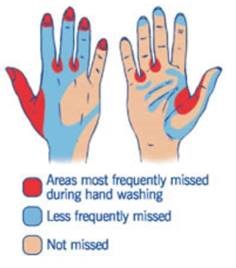5 ways to keep your pet disease free
Did you know? Many diseases can be spread to people from pets. Your veterinary healthcare team is trained in how to keep pets from contracting diseases in their hospital. Here are five ways you can decrease the risk of disease transmission at home, so you can protect your pets and your human family members.
1. Wash your hands
It sounds like a no-brainer, but handwashing (sanitizing works, too!) is vital in preventing disease from spreading. Always wash or sanitize your hands after:
- Handling pet food or treats (dry, canned, and especially raw)
- Why? People—especially the young, old, or immunocompromised—can get sick from the bacteria found on or in pet food and treats
- Changing cat litter or cleaning the fish tank
- Why? Feces can contain germs that can make people sick
- Petting pets (especially chickens, reptiles, and farm animals)
- Why? One word: Salmonella

2. Pay attention to how you’re washing your hands
Wash your hands using soap and warm water, or sanitize using an alcohol-based hand sanitizer. Be thorough—the areas most often missed are the thumbs, fingertips, and between the fingers.
3. Get coughing pets checked out as soon as possible
Coughing is not normal for dogs or cats. Coughing dogs could be suffering from:
- Canine influenza
- Canine infectious respiratory disease, which can be caused by several organisms that can be prevented by vaccines, like Bordetella and parainfluenza virus, as well as other organisms for which there are no vaccines
- Heart failure
- Heartworm disease
A coughing cat isn’t always struggling with a hairball. Unless a hairball actually comes up, your cat’s coughing might be a sign of:
- Asthma
- Heartworm disease
4. Protect your pets against disease
- Vaccinate appropriately based on your pet’s lifestyle and environment
- Check out AAHA’s guides for dog owners: AAHA 2018 Canine Vaccination Guidelines Lifestyle-Based Vaccine Calculator. For cat owners: 2013 AAFP Feline Vaccination Advisory Panel Report
- Use veterinary-recommended flea-, tick-, and intestinal parasite–preventive medications
- Read the preventive care guidelines for dog owners (AAHA-AVMA Canine Preventive Healthcare Guidelines) and for cat owners (AAHA-AVMA Feline Preventive Healthcare Guidelines)
- Talk to your veterinarian about how to prevent infections from wildlife or other animals
- Avoid putting your pet in a situation where she could be bitten by another animal
- Learn the common signs of fear and anxiety in dogs and cats
- Don’t allow your dog or cat to roam freely without supervision
- Consult with professionals to humanely remove wildlife (like rodents, bats, reptiles, etc.) from your home
- Keep your pet away from wild animals that may carry diseases, such as foxes, racoons, and skunks
- Prevent your pet from ingesting rotten food, contaminated water, or soil that could contain bacteria, viruses, or parasites from other animals
- Keep garbage cans covered tightly
- Don’t allow pets to drink out of community water bowls
- Avoid feeding your pet a raw-meat diet
5. Use antibiotics appropriately to prevent antibiotic resistance
Always finish the complete course of antibiotics your veterinarian prescribes your pet. If you stop treatment before directed, the bacteria in and around your pet could develop resistance against antibiotics. Also, only give prescription antibiotics to the pet to whom they were prescribed.
Learn more about the 2018 AAHA Infection Control, Prevention, and Biosecurity Guidelines.



